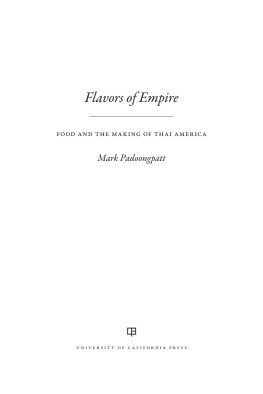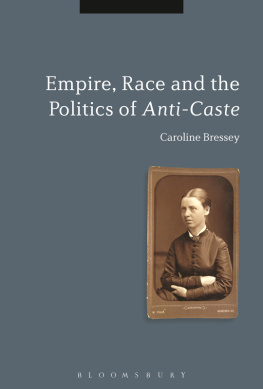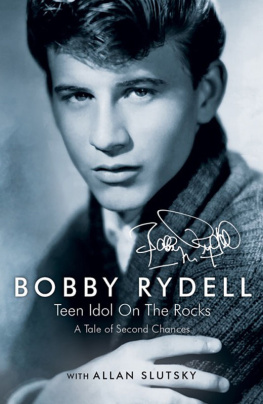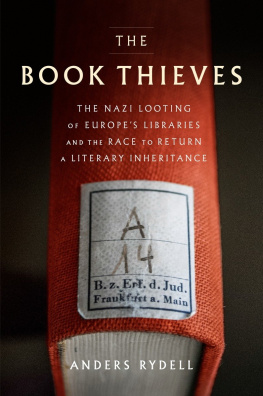The University of Chicago Press, Chicago 60637
The University of Chicago Press, Ltd., London
1984 by The University of Chicago
All rights reserved. Published 1984
Paperback edition 1987
Printed in the United States of America
08 07 06 05 04 03 02 6 7 8 9
Library of Congress Cataloging in Publication Data
Rydell, Robert W.
All the worlds a fair.
Bibliography: p.
Includes index.
1. ExhibitionsHistory. I. Title.
T395.5.U6R93 1984 909.81'074'013 84-2674
ISBN 0-226-73240-1 (paper)
ISBN 978-0-226-92325-3 (e-book)
 The paper used in this publication meets the minimum requirements of the American National Standard for Information SciencesPermanence of Paper for Printed Library Materials, ANSI Z39.481992.
The paper used in this publication meets the minimum requirements of the American National Standard for Information SciencesPermanence of Paper for Printed Library Materials, ANSI Z39.481992.
ROBERT W. RYDELL
All the Worlds a Fair
Visions of Empire at American International Expositions, 18761916
The University of Chicago Press
Chicago and London
To Kiki and to the memory of my parents
Contents
1. The Centennial Exhibition, Philadelphia, 1876
The Exposition as a Moral Influence
2. The Chicago Worlds Columbian Exposition of 1893
And Was Jerusalem Builded Here?
3. The New Orleans, Atlanta, and Nashville Expositions
New Markets, New Negroes, and a New South
4. The Trans-Mississippi and International Exposition, Omaha, 1898:
Concomitant to Empire
5. The Pan-American Exposition, Buffalo
Pax 1901
6. The Louisiana Purchase Exposition, Saint Louis, 1904
The Coronation of Civilization
7. The Expositions in Portland and Seattle
To Celebrate the Past and to Exploit the Future
8. The Expositions in San Francisco and San Diego
Toward the World of Tomorrow
Acknowledgments
The intellectual debts I have accumulated in completing this book can never be adequately repaid. They begin with public school teachers up and down the state of California who taught me the value of studying history. My interest in American culture generally, and worlds fairs specifically, developed while I was an undergraduate at Berkeley. Michael P. Rogin and Kenneth M. Stampp sparked my interest in American culture, and John Lottier and Mark Wilson called to my attention the importance of international expositions.
That my curiosity about worlds fairs and American culture ever developed into a book is due in large measure to Alexander P. Saxton and members of his UCLA graduate seminar on race, culture, and ideology. From the beginning, I have relied on Alex for guidance, inspiration, and friendship. At one critical juncture, he shared with me his appreciation of cacti blooming in the desert mountains, and I will never forget.
Other members of the UCLA faculty were generous with their advice, and the end product has benefited immensely. Thomas S. Hines served as my committee co-chair and led me to think hard about the relation between architecture and social change. Daniel Walker Howe offered valuable insight into the meaning the fairs held for Victorian America. Richard Lehan and Gary Nash also helped clarify my thoughts with their thorough readings of the manuscript, and Fawn Brodie and Blake Nevius offered constant encouragement that hastened its completion.
While this project was developing, many people took time to offer valuable suggestions for improvement. Merle Curti read an early draft of my research proposal and encouraged me to pursue my work. Neil Harris and Helen Lefkowitz Horowitz read the entire manuscript, and the book is much better as a result. I am particularly grateful to David Hollinger for his critical insights and for his helping hand along the way. Robert Abzug, Edward Barry, George B. Cotkin, George A. Frickman, James Henretta, Norris Hundley, Josiah Ober, Edwin J. Perkins, G. Terry Sharrer, Billy Smith, Robert Twombly, and Herman Viola also tendered advice that saved me from many pitfalls. I am equally indebted to the following individuals for reading and improving drafts of my chapters: Pete Daniel, Deborah A. Forczek, David A. Johnson, Lesley Kawaguchi, Harry Liebersohn, Jonathan McLeod, Janet T. Marquardt, Adrienne Mayor, Judy Powers, Marianne Roos, and Patricia A. Roos. In the course of completing this study, much of the burden fell on Jonathan and Nantawan McLeod. I shall always treasure their friendship.
My colleagues in the Department of History and Philosophy at Montana State University and members of the Society of American Historians, especially Kenneth Jackson, have my lasting gratitude for their support.
To librarians and library staff at the following institutions I owe a special debt: the Atlanta Historical Society; the Bancroft Library; the Beinecke and Sterling libraries at Yale; the Buffalo and Erie County Historical Society; the Department of Special Collections at California State University, Fresno; the Chicago Historical Society; the City Archives of Philadelphia; the Honnold Library at Claremont Colleges; the Denver Public Library; the Perkins Library at Duke University; the Georgia State Archives; the Historical Society of Pennsylvania; the Library of Congress, Manuscripts Division; the Missouri Historical Society; the National Anthropology Archives; the National Archives; the National Museum of American History Library; the New York Public Library; the Oregon Historical Society; the Portland Public Library; the San Diego Historical Society; the Smithsonian Institution Archives; the Southwest Museum; the Tennessee State Library and Archives; the Department of Special Collections at UCLA; the Western History Collection at the University of Colorado; the University of Oregon; and the University of Washington. Without their cooperation, I could not have written this book. Members of the interlibrary loan and reference departments at UCLA deserve special mention for their support. Edith Fuller, Janet Ziegler, Norma Pasillas, Jo Crawford, and Carolee Shoemaker did a first-rate job in tracking down my endless requests, and their unfailing cheerfulness made the research a pleasure. At the Smithsonian Institution, Scott Berger, William Cox, William Deiss, James Glenn, William Massa, Rhoda Ratner, and Rich Szary helped me to mine the rich resources of the archives with their knowledge and skill. Ron Mahoney, head of the Department of Special Collections at California State University, Fresno, has turned the exposition collection into one of the finest in the country. Ward Childs, James Hoobler, and Rene Jaussaudrespectively at the City Archives of Philadelphia, the Tennessee State Library and Archives, and the National Archivesalso have my gratitude for their assistance.
Grateful acknowledgment is also made to the editors of American Quarterly, Journal of American Culture, and Pacific Historical Review for permission to reprint revisions of articles that first appeared in those journals.
Completion of the book was aided by grants from Montana State University, the Institute of American Cultures at UCLA, and the Smithsonian Institution. I deeply appreciate their support for this project.
Brett Gary, Nanci Brug, and Dianne Ostermiller typed the manuscript and endured my requests for last-minute changes.
Finally, who could be more fortunate? My mother and father encouraged my love for history and urged me to become a teacher. They also encouraged me to pursue a dream that my wife, Kiki Leigh Rydell, has helped me fulfill.
Introduction
And when these days were expired, the king made a feast unto all the people that were present in Shushan the palace, both unto great and small, seven days, in the court of the garden of the kings palace; where were white, green, and blue hangings, fastened with cords of fine linen and purple to silver rings and pillars of marble: the beds were of gold and silver, upon a pavement of red, and blue, and white, and black marble. And they gave them drink in vessels of gold, (the vessels being diverse one from another,) and royal wine in abundance, according to the state of the king. And the drinking was according to the law; none did compel: for so the king had appointed to all the officers of his house, that they should do according to every mans pleasure. Also Vashti the queen made a feast for the women in the royal house which belonged to king Ahasuerus.
Next page







 The paper used in this publication meets the minimum requirements of the American National Standard for Information SciencesPermanence of Paper for Printed Library Materials, ANSI Z39.481992.
The paper used in this publication meets the minimum requirements of the American National Standard for Information SciencesPermanence of Paper for Printed Library Materials, ANSI Z39.481992.